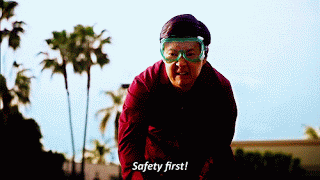Titanium Dioxide: A Hidden Danger in Consumer Products?

Could your morning beauty routine contain a substance linked to DNA damage and cancer? What about that colorful gum you chew? Unbeknownst to many consumers, a common compound found in everywhere from lipstick to candy may have a dark side that scientists are racing to uncover.
Titanium Dioxide's Jekyll and Hyde Nature
Titanium dioxide (TiO2) is seemingly everywhere these days. It's found in a huge range of consumer products including food, cosmetics, sunscreens, paints, and more. This ubiquitous compound is extremely useful for its bright white pigment and ability to reflect UV light. However, there is growing controversy around the safety of titanium dioxide, especially when it's present as nanoparticles.
Titanium dioxide has long been considered a safe, useful compound. The bright white powder features in an untold number of products we interact with daily, thanks to properties that make it an efficient colorant, UV blocker, and texturizer.
But emerging research indicates titanium dioxide may have a Split personality - with newfound risks in nano particulate form that have some re-thinking its presence across grocery store aisles and bathroom cabinets worldwide.
What is Titanium Dioxide and Why is it Used?
Titanium dioxide is a white powder that has been used for century in an array of applications. It has a variety of useful properties:
- Bright white pigment
- Reflects and scatters UV light
- High opacity and hiding power
- Chemically inert
- Cost-effective
In consumer products, it serves several purposes:
- Food - Used as a coloring agent to create a white appearance or opaque effect in products like candies, icings, and powdered drink mixes. Also sometimes used to add texture.
- Cosmetics - The white pigment helps creams, lotions, ointments, and powders appear brighter and smoother on skin. The light reflecting properties also protect skin from UV damage.
- Sunscreen - The UV light scattering ability helps shield skin from the sun. Often used in "mineral sunscreens."
- Paint - Provides hiding power, durability, and white tinting for paints and coatings. Also used in paper, plastics, textiles, and more.

The Problem: Tiny Particles, Growing Concerns
While titanium has a long history of safe use, concerns started emerging in the late 1990s about titanium dioxide nanoparticles. Nanoparticles are infinitesimally tiny particles - often thousands of times smaller than the width of a human hair.
At these nano-scale sizes, substances can take on surprising and unpredictable new properties. And evidence started mounting that titanium dioxide nanoparticles may pose health risks we never realized before.
Early Safety Concerns About Nanoparticles Emerge
In animal studies, researchers discovered nano-sized titanium dioxide particles could traverse cell walls and accumulate inside organs. This raised flags that the compound might move around the body more than previously understood.
Early experiments also indicated DNA damage could result after exposure to the particles, especially at high doses. More research was needed, but the potential genotoxic effects raised alarm bells.
2011: IARC Labels Titanium Dioxide Possibly Carcinogenic
In 2010 and 2011, the International Agency for Research on Cancer (IARC) convened groups of scientists to evaluate various forms of titanium dioxide for carcinogenic potential.
They reviewed hundreds of studies assessing different titanium dioxide particles across size ranges. Importantly, they looked not just at lab animal data, but also occupational exposure in humans.
In the end, they labeled titanium dioxide generally safe. However, they categorized nano-sized particles as “possibly carcinogenic to humans” (Group 2B) due to insufficient data to make a clear determination either way.
The group concluded lung tumor formation “is driven by the particle size and the increased surface area that enhances intrinsic toxicological properties of TiO2.” The smallest particles had the most potential to cause genetic damage linked to cancer development.
Why the Sudden Concerns About Safety?
Thankfully, regulators have taken notice and begun assessing titanium dioxide more closely. Groups like the International Agency for Research on Cancer and European Food Safety Authority identify carcinogenic characteristics of nanoparticles specifically.
2017: European Food Safety Authority Deems E171 Unsafe
E171 is the food-grade coding used to identify nano-sized titanium dioxide as an additive in the European Union. Companies had used E171 safely in products for decades - or so it was thought.
In 2016, following an extensive review of literature, the French Agency for Food, Environmental and Occupational Health & Safety (ANSES) declared titanium dioxide E171 should no longer be considered safe for human ingestion.
The European Food Safety Authority (EFSA) concurred the following year. After their own exhaustive evaluation, EFSA concluded there could no longer be reasonable certainty of no harm from the nano-additive.
They cited possible genotoxicity, inflammation, and carcinogenic effects that outweighed the benefits in food. They withdrew support for the safety of the additive.
2022: EU Bans E171 in Food Due to Health Concerns
It took several years to move through various committees, but in 2022 the European Commission finally imposed strict regulations severely limiting the use of E171 in food products.
While some uses still remain provisionally approved for additional safety testing, the action effectively bans the additive from most human consumption. Only trace amounts below detection thresholds will be allowed moving forward.
Ongoing Safety Evaluations for Broader Use Titanium Dioxide
While the EU ban was specifically about nano-sized particles used in food products, it raised larger questions around safety of titanium dioxide in general.
France took the bold step in 2021 of banning use of titanium dioxide in cosmetic and sunscreen products nationally due to similar worries about nanoparticle absorption through skin.
Other nations are reticent to take such severe stances until more evidence is in. But researchers and regulators continue investigating.
The World Health Organization is currently re-assessing broad use risks related to titanium dioxide across different sizes and applications. Their review incorporates the most up-to-date data and will provide guidance about what additional regulatory actions may need to occur.
For now though, titanium dioxide remains widely used worldwide in all types of consumer products with exception of the food limitations imposed strictly within EU markets.
The Next Steps for Consumers, Industries, and Policymakers
Consumers often feel powerless about risks from compounds like additives. But public discourse and market pressures do impact what products companies create and regulators allow. Several recommendations while the science continues developing:
Consumers
- Avoid products listing titanium dioxide (especially nanoparticle versions) as much as feasible if risk is a top concern for you
- Understand that some TiO2 use brings benefits which agencies weigh seriously before limiting or banning broadly
- Provide public feedback to companies about concerns to impact product development decisions
Industry
- Proactively innovate products to use non-nano-sized titanium dioxide or other safer alternative substances when possible
- Clearly label titanium dioxide on packaging including particle size used
- Fund additional research to better understand long-term impacts from titanium dioxide exposure
Policymakers
- Push for more detailed warning labels about titanium dioxide use allowing consumers to make more informed choices
- Incentivize industry to develop safer alternatives ingredients through grants and public research
- Provide guidance to restrict use only in products where benefits outweigh potential risks
The impacts from subtle omnipresent compounds in products we touch everyday are often invisible. But regulators and scientists take seriously warning signs about chronic exposure impacts that may take decades to manifest.
While much still remains unknown about titanium's dioxide's long-term effects, especially as nanoparticles, wise precautions today could prevent later harm. Policymakers will continue navigating how best to mitigate risks, while allowing industries flexibility to innovate safer products.
Consumers play a crucial role too by voicing preferences through purchasing choices. Continued open dialogue and transparency from all sides offers the best path to maximize benefits and health for society.
The coming years will see whether titanium dioxide use changes more broadly. But for now, be empowered with knowledge about this unique substance present all around us each day.

A Possible Scenario - When a Safety Assumption Proves Risky
I couldn't help but empathize when I read the story of a mother who learned her sunscreen could carry unintended risks. She had been letting her young daughters apply popular mineral formulas daily, trusting their safety. But new questions around titanium dioxide nanoparticles revealed even experts grapple to identify long-term impacts from ingredients once deemed benign.
This mom became distraught realizing the very products meant to protect skin instead may enable cellular-level changes through newly discovered biochemical processes. While no consensus deemed these sunscreens categorically dangerous yet, it pained her to acknowledge ingredients permitted for years might reveal effects down the road that past testing never illuminated.
Thankfully, by learning more about dermal absorption pathways and how reducing nanoparticle penetration can minimize exposure, this mother felt empowered to make wiser choices for her family. But her experience proved an unsettling crash-course in how even toxicologists struggle predicting far-future health implications from chronic, low-dose contact with ubiquitous compounds.
Still, increased knowledge around next-generation materials offered some solace, allowing her to avoid formulas with more concerning permeation and uptake. And her story highlighted how transparency from manufacturers and regulators helps consumers balance protection and safety until clearer standardization develops.
While disconcerting, scenarios like this mother’s ultimately move markets towards greater wisdom on all sides. Formulating products involves guessing long-run impacts, but modern advances can outpace assumptions. Open information channels help continually refine safety in an evolving world.

Key Takeaways: Stay Informed, Make Wise Choices
When it comes to pervasive ingredients like titanium dioxide, a few key takeaways matter for consumers:
- Recognize nanoparticles behave uniquely from larger particles
- Understand ban thresholds balance risk versus benefit
- Research products to know which feature nanoparticles
- Limit use of items listing titanium dioxide near eyes/mouth
- Check regulations in your region around allowed uses
- Stay updated on emerging research into nanomaterial safety
Continued open dialogue and transparency around compound prevalence allows the best path finding maximum health.
The impacts from subtle omnipresent ingredients in our everyday products remain murky. But by staying informed and making wise choices about compounds like titanium dioxide, consumers and policymakers together uplift evidence guiding safety for all.
Thank you for reading this post! If you found it helpful or informative, please consider sharing a 7 day free trial with your friends, family, or colleagues who might benefit from it.
Your support helps me reach more people and spread awareness on important topics like this. Together, we can make a difference!




